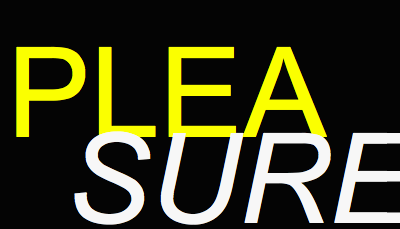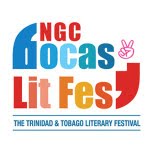 |
| Photo courtesy Nadia Huggins |
EVER SINCE her father died, Nadia Huggins, 32, has been hoarding things. But not the things people normally hoard like old documents, haberdashery and knick-knacks. No, she has been hoarding memories.
“I am normally the type of person who gets rid of things quickly. But after my dad died, I find that in my work I hoard all these sentimental things,” Huggins says as we chat on a British Airways flight from Trinidad and Tobago bound for Northern Ireland.
“I am always looking for a memory of something, a feeling, something I would have felt once. It feels like you are always trying to chase an impossible memory. There is always some baggage from the past attached to it.”
Huggins is one of the artists whose work was featured in the ground-breaking exhibition
Caribbean Queer Visualities staged at Belfast in early November as part of Outburst, the queer arts festival which has been making strides.
One online poster for the show featured Huggin’s photographic diptych
Is that a buoy? The eye is drawn to two floating objects. But one of these is a human head, barely discernable, rising from the water. The other is a buoy, floating like a serene planet between sea and sky. We are given little to signal gender, race or anything that might mark the human figure: the artist has muted colour, submerged the form and rendered the face as a silhouette, with the slightest suggestion of eyelashes. We are made to question what we see. It’s a work that challenges us to cross boundaries, something that seems to resonate with Huggin’s own life.
Of her father, who was an architect among many other things, Huggins says, “He was a strange person, he had very unusual habits and ideas. He was very counter to the norms, against what a small island would expect of a person. He used to design his own Carnival bands.”
“He passed away in 2006, he was an alcoholic. He suffered from depression as well. It tied into his feeling of not being accepted. Which is funny because that is something I also battle with: feeling like an outsider, not feeling a sense of belonging in your own home, in your own country.”
QUEER DIASPORA
Huggins was born in Trinidad on January 28, 1984. But her parents moved around a lot including to countries like the UK and Barbados. Eventually, they returned to St Vincent and the Grenadines. Years later, she moved back to Trinidad (which she calls the “New York of the Caribbean”) on her own.
So where is home?
“That’s a very difficult question,” Huggins says. “St Vincent and the Grenadines still feels like home. It’s where all the nostalgia exists right now. Mom is in St Vincent. You never realize a place is home until you leave it.”
Home is a concept that many members of the LGBTI community in the Caribbean – like the rest of the world – grapple with given the economic, social and political barriers to equality there.
Caribbean Queer Visualities deals with this question of belonging. It was curated and coordinated by: David Scott, Erica James, and Nijah Cunningham, with assistance from Colette Norwood of the British Council Northern Ireland and Annalee Davis of British Council Caribbean. The show was put on at the Golden Thread Gallery and supported by Ruth McCarthy, director of the Outburst festival in Belfast.
 |
| Nadia Huggins' Is that a buoy? |
“I am blown away that we’ve got something of this quality in Outburst,” McCarthy says in a Skype interview, taking a break from her busy festival responsibilities. “This is an important exhibition. We really wanted to create a space where there could be LGBTI persons having a voice; a self-determining space. The theme of our festival is home which is fitting as I think that a ‘queer diaspora’ is really important. So many people leave home in order to be themselves. Many in the UK move to London, for instance. I think queer people leave home at rates much higher than straight people.”
Huggins certainly identifies with the perspective of the outsider. Even if she does not consciously set out to explore questions relating to gender, sex and sexuality, her work implicitly challenges us to ask questions on that level, whether through her stunning self-portraits to her photography work more generally (which often features human forms submerged in yet apart from their landscape).
FREEDIVER
Huggins is ready to free dive. As our flight progresses, she looks admiringly at the cover of an in-flight magazine which bears a photograph of Chizuko Nakamura, 63, one of the last members of Japan’s elite group of tough female divers who, year-round, plumb depths as deep a 65 feet, holding their breath for up to two minutes.
“I’d like to do that,” she says. The idea of free diving might seem a strange thing for her to discuss while we are seated thousands of miles up in the air. But in many ways what Huggins does in her art is just as daring as anything the Japanese
ama do.
Melanie Archer, writing in
Caribbean Beat, says her work shows, “a keen observational eye, a mastery of composition that heightens the drama of a moment, and atmospheric tones that hint always at an extra layer — something present but not quite said”. Hugh Howey describes her work as “gritty and primal”; “young and mature”; “dirty and innocent”. The
Designer Island website says the work is, “sometimes dreamy sometimes gritty but always uniquely Caribbean.”
Is that a buoy? has something most in common with three of Huggins series of photographs:
Black and Blue;
Circa no Future and
Fighting the Currents.
In
Black and Blue, boys are pictured on a beach at Canaries, Saint Lucia. They are placed out of focus, rendered as shapes, forms, silhouettes. So rendered, they seem to have been painted by El Greco or sculpted by Alberto Giacometti. The seeming distortion of the human body is a tool used to get us to project our own questions into the frame. What makes us one thing or another? Huggins is at once asking what is distinctive about our own roles and also challenging that idea of the human spirit being boxed into performing the same functions.
 |
| From Nadia Huggins' Black and Blue series |
In
Circa no Future the boys are brought back into focus and the terrain of the coast – that liminal space where earth and water meet – is rendered more clearly. Yet, all distinctive Huggins erasures are still there, be it bubbles that block a face, or shots taken in a perspective that renders the human body distant or anonymous – the human face is sometimes just out of the frame. This time, though, this process of masking is balanced with an epic sense of adventure, as though the heady thrill of having fun in the sea is what matters most: joy that renders individuality irrelevant.
In a sense it was only natural that the artist would next place herself into the frame within this coastal environment that she is so evidently drawn to. It is a space that embodies the pull and tug of currents, both within and without, that she has had to fight. Even in works that look at seemingly tangential aspects of the sea terrain (like
The fishermen;
Vendors and
Pulling the net) there is a sense that what we are looking at is not just what we are looking at. These are remnants of a childhood feast – part of a landscape of freedom.
Along with
Fighting the currents,
Is that a buoy? is an important moment in Huggins’ body of work, the point at which she presents herself most vulnerably, even if mediated through shadow, water and coastal masque.
“I am trying to come to terms with not being accepted growing up in a place like St Vincent, a small island,” Huggins says of
Is that a buoy? as our flight to Belfast continues over the Atlantic. “I have always felt a little bit of resentment for small island society. Growing up I was a tomboy. Going to the beach people would come to me and ask me: are you a boy or girl?”
“It’s this idea of not understanding what you are looking at, who you are looking at. When looking at something at a distance it looks exactly the same.” I think of her side-project,
Every horizon looks the same – a website where she invites people to submit photos of the horizon.
 |
| From Huggins' Circa no future series |
While she seeks to assert the universal within, she also places emphasis on the individual’s uniqueness. She adds, “It’s a discrimination that happens. That’s what it’s about people not spending time to look at you and understand.”
Our conversation is interrupted when a flight attendant comes back to give us an update on the US presidential election (our flight had left Port of Spain before the first results became known, signaling Donald Trump’s victory).
Huggins takes in the information silently and we continue our conversation. She recalls making the empowering decision to shave her head when she was 17 years old, just as she had been diagnosed with alopecia or chronic hair loss.
“Those years were super difficult. I used to get teased a lot, called a zammie or lesbian. At the same time this all came as I was dealing with the fact of being bisexual. With the hair loss, even if I could conceal one thing about me I could not conceal that.”
“I’ve always felt nature had a different idea for me. It kinda forced me into this box of being perceived as wanting to be masculine. I always wanted to be a woman. Whatever that is. I didn’t want to be tied down with labels. I never wanted to meet anybody’s expectations.”
- from
Sunday Newsday, November 27, 2016, Spotlight page 3
***
More coverage of
Small Axe's
Caribbean Queer Visualities here and
here,





























